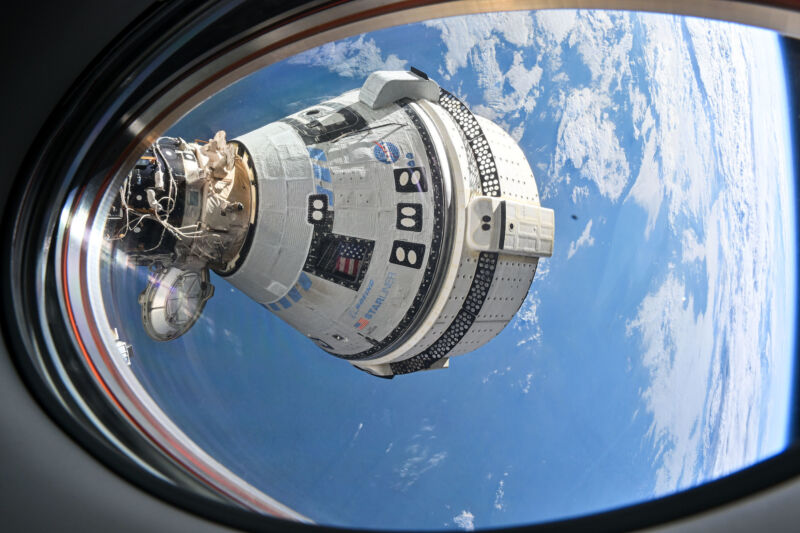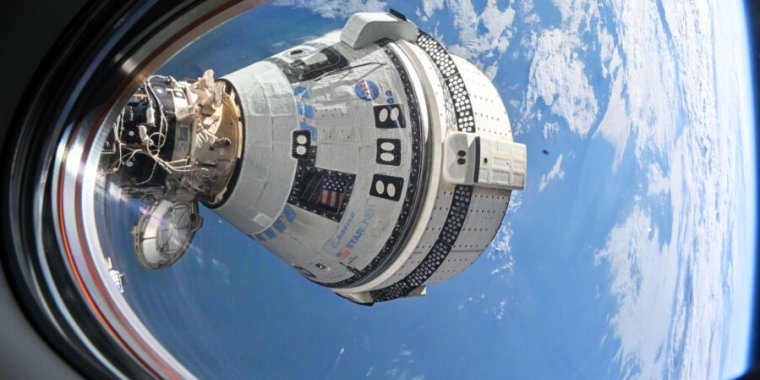
As soon as this week, NASA officials will make perhaps the agency’s most consequential safety decision in human spaceflight in 21 years.
NASA astronauts Butch Wilmore and Suni Williams are nearly 10 weeks into a test flight that was originally set to last a little more than one week. The two retired US Navy test pilots were the first people to fly into orbit on Boeing’s Starliner spacecraft when it launched on June 5. Now, NASA officials aren’t sure Starliner is safe enough to bring the astronauts home.
Three of the managers at the center of the pending decision, Ken Bowersox and Steve Stich from NASA and Boeing’s LeRoy Cain, either had key roles in the ill-fated final flight of Space Shuttle Columbia in 2003 or felt the consequences of the accident.
At that time, officials misjudged the risk. Seven astronauts died, and the Space Shuttle Columbia was destroyed as it reentered the atmosphere over Texas. Bowersox, Stich, and Cain weren’t the people making the call on the health of Columbia‘s heat shield in 2003, but they had front-row seats to the consequences.
Bowersox was an astronaut on the International Space Station when NASA lost Columbia. He and his crewmates were waiting to hitch a ride home on the next Space Shuttle mission, which was delayed two-and-a-half years in the wake of the Columbia accident. Instead, Bowersox’s crew came back to Earth later that year on a Russian Soyuz capsule. After retiring from the astronaut corps, Bowersox worked at SpaceX and is now the head of NASA’s spaceflight operations directorate.
Stich and Cain were NASA flight directors in 2003, and they remain well-respected in human spaceflight circles. Stich is now the manager of NASA’s commercial crew program, and Cain is now a Boeing employee and chair of the company’s Starliner mission director. For the ongoing Starliner mission, Bowersox, Stich, and Cain are in the decision-making chain.
All three joined NASA in the late 1980s, soon after the Challenger accident. They have seen NASA attempt to reshape its safety culture after both of NASA’s fatal Space Shuttle tragedies. After Challenger, NASA’s astronaut office had a more central role in safety decisions, and the agency made efforts to listen to dissent from engineers. Still, human flaws are inescapable, and NASA’s culture was unable to alleviate them during Columbia‘s last flight in 2003.
NASA knew launching a Space Shuttle in cold weather reduced the safety margin on its solid rocket boosters, which led to the Challenger accident. And shuttle managers knew foam routinely fell off the external fuel tank. In a near-miss, one of these foam fragments hit a shuttle booster but didn’t damage it, just two flights prior to Columbia‘s STS-107 mission.
“I have wondered if some in management roles today that were here when we lost Challenger and Columbia remember that in both of those tragedies, there were those that were not comfortable proceeding,” Milt Heflin, a retired NASA flight director who spent 47 years at the agency, wrote in an email to Ars. “Today, those memories are still around.”
“I suspect Stich and Cain are paying attention to the right stuff,” Heflin wrote.
The question facing NASA’s leadership today? Should the two astronauts return to Earth from the International Space Station in Boeing’s Starliner spacecraft, with its history of thruster failures and helium leaks, or should they come home on a SpaceX Dragon capsule?
Under normal conditions, the first option is the choice everyone at NASA would like to make. It would be least disruptive to operations at the space station and would potentially maintain a clearer future for Boeing’s Starliner program, which NASA would like to become operational for regular crew rotation flights to the station.
But some people at NASA aren’t convinced this is the right call. Engineers still don’t fully understand why five of the Starliner spacecraft’s thrusters overheated and lost power as the capsule approached the space station for docking in June. Four of these five control jets are now back in action with near-normal performance, but managers would like to be sure the same thrusters—and maybe more—won’t fail again as Starliner departs the station and heads for reentry.

Dr. Sarah Adams is a scientist and science communicator who makes complex topics accessible to all. Her articles explore breakthroughs in various scientific disciplines, from space exploration to cutting-edge research.







